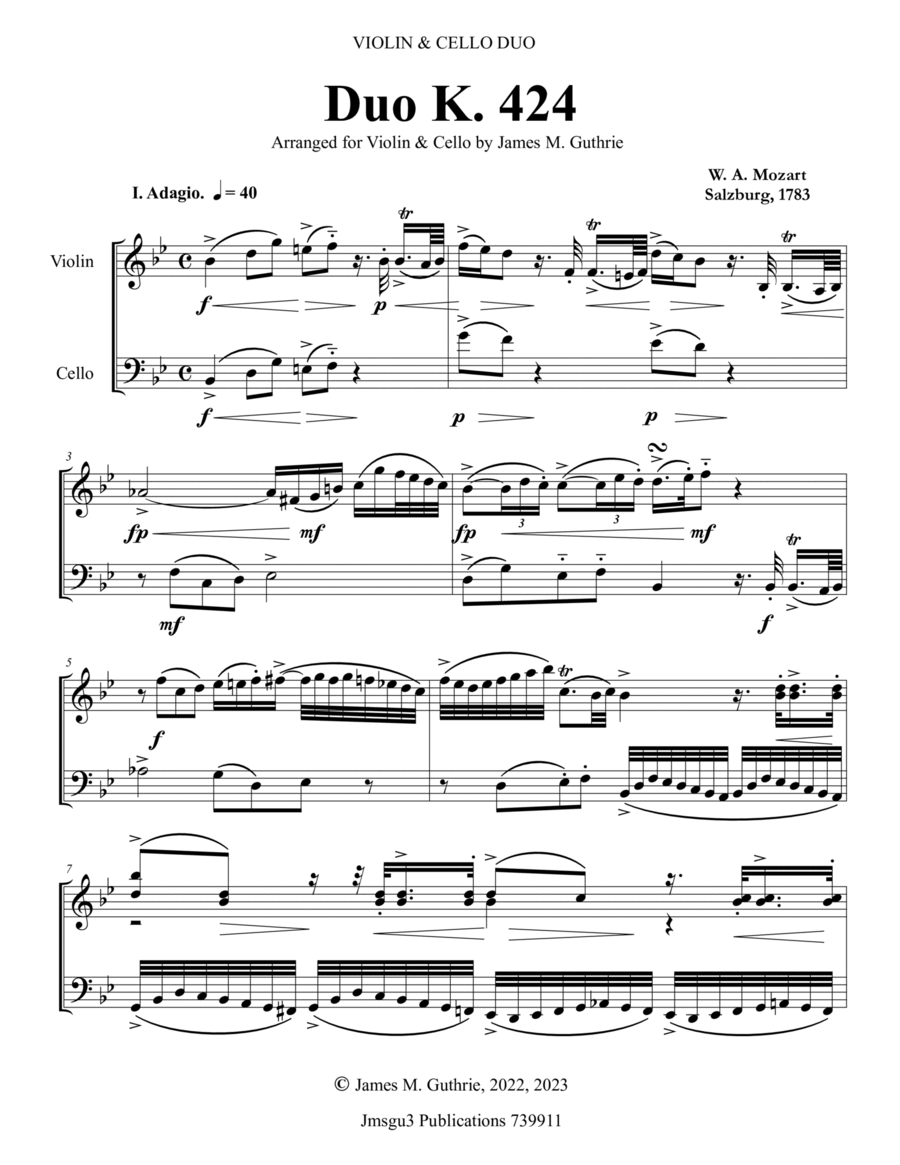Cello,Instrumental Duet,Violin - Level 4 - Digital Download SKU: A0.1139642 Composed by Wolfgang Amadeus Mozart. Arranged by James M. Guthrie, ASCAP. Chamber,Classical,Contest,Festival,Historic,Wedding. 44 pages. Jmsgu3 #739911. Published by jmsgu3 (A0.1139642). I. Adagio - Allegro II. Andante cantibile III. Thema Allegretto grazioso & 6 Variations - Allegro.Mozart wrote the Duo K. 424 in the summer of 1783 to complete Michael Haydn's set of six for Archbishop Colloredo. Michael Haydn was a close friend of Mozart and a composer he admired. When Mozart heard of Michael Haydn's plight, he quickly wrote the two delinquent duos and delivered them to the Archbishop under Haydn's name. The set of six was presented as all Haydn's, and Colloredo could not detect in them Mozart's obvious workmanship. The piece was carefully designed to complete the set by choosing two keys not already used by Haydn. Among the devices Mozart uses to camouflage his authorship are the chirping grace notes and trills in the opening movement of K. 424. The Duo K. 424 is an example of Mozart's ability to write music in the style of his contemporaries while still maintaining his unique voice.
